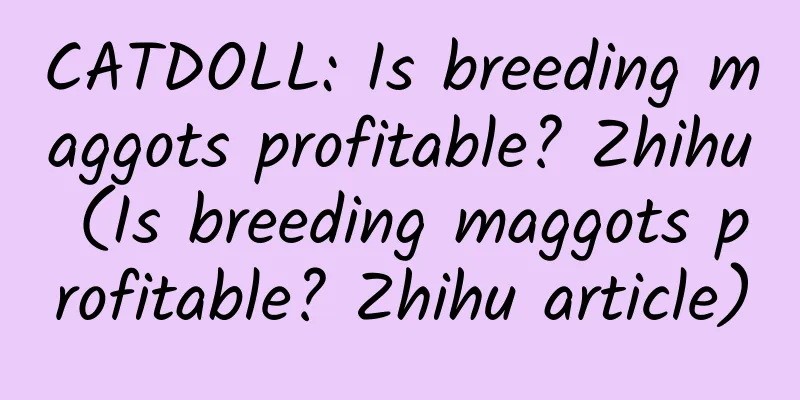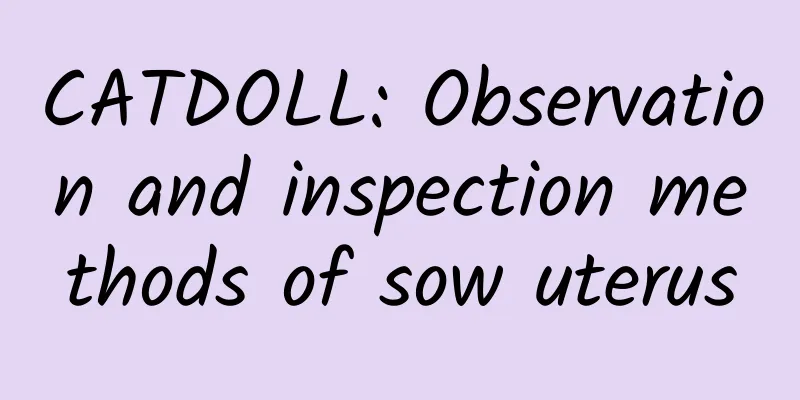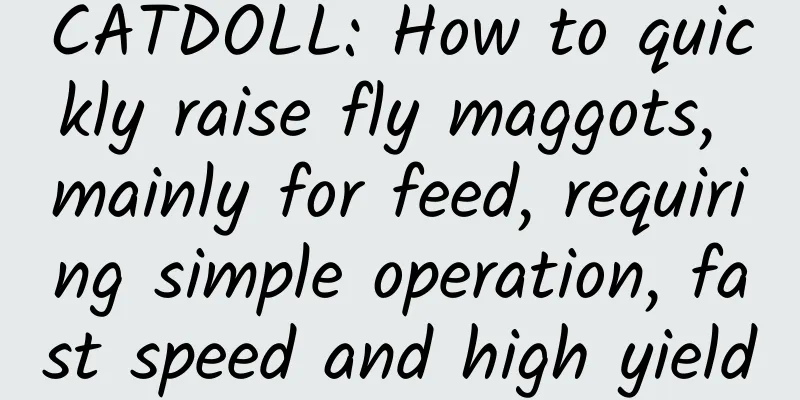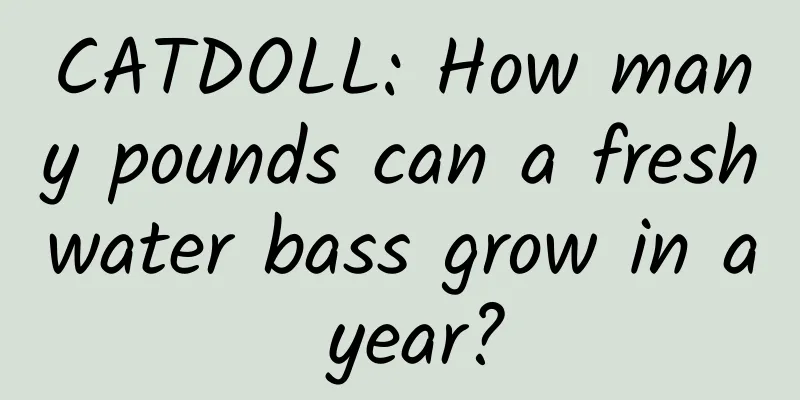CATDOLL : CATDOLL: Fish farming technology in fish ponds?

|
Fingerling stocking Fish fingerlings are the material basis for adult fish farming, and stocking of fish fingerlings is a key link in adult fish farming. Factors such as the source of fish fingerlings, the quality of fish fingerlings, the combination of species and the stocking density all have an important impact on the yield of adult fish. 1. Source of fish species Generally, small-scale individual fish farmers usually purchase the fish species they need for adult fish farming from local seed farms. However, for large-scale state-owned or collective fish farms, it is best to produce the fish species they need for adult fish farming themselves. In this way, they can breed marketable commercial fish according to market needs, reduce the trouble of transporting purchased fish species, and ensure the quantity and quality of the fish species required for production. 2. Quality of fish species In adult fish farming, the requirements for fish species are sufficient quantity, complete varieties, strong physique, and no injuries or diseases. 1. Fish species specifications Stocking large-sized fish is an effective measure to increase the production of adult fish farming. This is because large fish have the advantages of strong adaptability, fast growth and high survival rate. In the southern region, due to the mild climate and long growth period of fish, the production cycle of several major farmed fish species is two years. The stocked fish species are all one-year-old fish species, most of which are required to be 16-20 cm in length and weigh more than 50 grams. For example, in Guangdong Province, the bighead carp grows fast and is easy to catch, and several batches of edible fish are raised in a year. Therefore, the bighead carp species are required to be larger, generally 0.1-0.5 kg, and can grow to 1.25-1.5 kg after 40-60 days of feeding; the stocking amount of silver carp is smaller, the fish species are about 50 grams, and the grown fish are 0.75-1.25 kg; the bottom fish is mainly dace, because dace grows slowly and has a smaller edible size, but the group yield is high, so the stocking density is larger and the fish species are also smaller, generally 12.5-25 grams or 42-62.5 grams, and can grow to 125-250 grams after one year or half a year of feeding; the grass carp species are generally about 250 grams, and the size out of the pond is 1-1.5 kg; the stocking amount of silver carp, carp and bream is very small. (II) Physique of fish species The quality of fish can be judged from its weight and appearance. From the appearance, the characteristics of good quality fish are: neat size, plump muscles, bright color, no disease and injury, and lively swimming. Preparation before stocking fish Natural ponds that have never raised fish, intensive ponds or rough ponds that have raised fish for more than one year must be fully repaired and disinfected before stocking fish. The specific method is the same as that of seedling ponds. In the stocking plan, ponds with a large proportion of silver carp and bighead carp should be applied with basal fertilizer 1-2 days after cleaning and disinfection, first fertilize the water quality, and then stock the fish. Fertilizer ponds or ponds that have raised fish for many years have more silt at the bottom of the pond, and generally less or no basal fertilizer is applied. For ponds stocked in winter, water should be added to the maximum depth at one time so that the fish can overwinter in deep water. For ponds stocked in spring, if the water source is reliable and drainage and irrigation are convenient, it is not advisable to fill the pond too deep for the first time after cleaning the pond. The water depth should be 70-80 cm. This will increase the water temperature easily, which is conducive to water quality conversion and fish feeding and growth. Later, as the water temperature rises and the fish grow, the water depth can be gradually increased until it reaches the maximum depth in July. 3. Fish stocking time and precautions 1. Stocking time In the Yangtze River Basin and the areas south of it, winter stocking (early December to late January) or spring stocking (mid- to early-March) can be adopted when the water temperature is 6-10℃. Because fish have poor mobility at low temperatures, they are easy to catch and not easily injured during the operation. The advantage of winter stocking is that it can avoid the procedure of overwintering fish in ponds, so that fish can adapt to the environmental conditions of adult fish ponds earlier and prolong the growth time. The advantage of spring stocking is that the water in adult fish ponds can be drained for winter rest. Localities can flexibly grasp it according to actual production conditions and pond conditions. 2. Notes ① Be careful when operating to avoid damaging the fish; ② Choose sunny days for stocking to facilitate operation and transportation; ③ To prevent the spread of fish diseases, fish species should be disinfected by immersion in drugs; ④ The fish stocking work should be recorded in a table for future reference. Fish breeding and management All the material conditions and technical measures for fish farming can only play a role through the daily management of the pond. The basic contents of daily management are as follows. Fertilization and feeding Intensive fish ponds with mixed culture and dense stocking, large amounts of fertilizer and artificial feed must be applied to obtain high and stable yields. Therefore, fertilization and feeding become the central tasks of daily pond management. (I) Fertilization After the stocking of fish, topdressing should be carried out in time according to the water quality of the pond during the entire adult fish breeding stage. The purpose of topdressing is to continuously replenish the nutrients in the water and provide natural bait for the reproduction of fat water fish such as silver carp and bighead carp. Topdressing should be carried out in accordance with the three-point fertilization method, mastering the principles of timely, uniform, small and multiple times. The specific methods can refer to the methods in parent fish breeding. The pond water should be kept fertile, active, tender and refreshing, with a transparency of 25-30 cm. For ponds that mainly raise silver carp and bighead carp, water cultivation should be carried out at both ends (i.e. spring and autumn). The transparency of the pond water can reach about 25 cm before June. Because the water temperature in spring and autumn is lower, it is suitable for the reproduction of plankton and is also conducive to the growth of silver carp and bighead carp, so various organic fertilizers can be applied in large quantities. Various manures are better when sprinkled at noon on sunny days, but care should be taken to avoid the feeding area. In units with insufficient fertilizer sources, local materials can be used to make a large amount of green manure, which is an effective way to solve the problem of insufficient fertilizer sources in commercial fish bases. In the summer (July-September) when fish grow rapidly, due to the high water temperature and large feeding amount, the water quality is generally fertile, and less or no topdressing can be applied. At this time, the nitrogen content in the water is high, the phosphorus content is very low, and the nitrogen-phosphorus ratio is seriously unbalanced. If topdressing is to be applied, it is better to spray phosphate fertilizer on a sunny day. It not only plays an important role in promoting the growth of phytoplankton and improving pond productivity, but also is not easy to deteriorate water quality, which is beneficial to pond fish. Generally, phosphate fertilizer can be applied once every 15 days or so, with an average water depth of 1 meter per mu, and 3.3 kg of fish tering or 10 kg of superphosphate can be applied each time. First dissolve the phosphate fertilizer in water and choose a sunny day to spray the whole pond at 9-10 am. On the day of fertilization, the pond water cannot be stirred (including pulling the net, adding water, starting the aerator, etc.) to prolong the suspension time of phosphate fertilizer in the water and reduce the adsorption and fixation of colloids such as pond mud. (ii) Baiting 1. Annual feeding amount and monthly feeding plan (1) Annual feed usage: For fish farming units that have been raising fish for several years, if conditions have not changed much, the annual feed usage can generally be roughly determined based on past experience. For fish farming units that are raising fish for the first time or have been raising fish for several years but conditions have changed significantly, the annual feed usage must be determined by calculation. Calculation formula: Q=PrKA Where: Q--Annual usage of a certain feed (kg) P--Pond fish production (kg/mu) r--Ratio of the feed (%) K--Feed coefficient of the feed A--Total area of the fish pond (mu) (2) Determination of monthly feeding plan and daily feeding amount The feeding plan for each month of the year is mainly formulated based on the water temperature, fish growth and feed supply in each month. Because fish are cold-blooded animals, their food intake is significantly affected by changes in water temperature. For fish of the same weight, within the suitable temperature range, the higher the water temperature, the greater the food intake. Therefore, the feeding rate (the percentage of daily feeding amount to the weight of the fish fed) increases with the increase of water temperature; while at the same water temperature, the suitable feeding rate of a certain fish tends to decrease with the growth of the individual. According to practical experience, the feeding work throughout the year should follow the feeding rules of early feeding, late feeding, catching in the middle, and leading at both ends. That is, all kinds of feed throughout the year are mainly concentrated in the seasons from June to September when fish feed vigorously and grow fastest. The proportion of feed fed before June and after September is relatively small. The actual daily feeding amount is mainly determined by the season, water color, weather and fish feeding conditions. The specific approach can be flexibly grasped according to the following actual conditions, and appropriately increased or decreased. Pond fish feeding conditions: The feeding amount of granular feed should be eaten within 15-20 minutes after feeding; the paste feed should be eaten within 1 hour after each feeding; the green feed should be eaten on the same day; the shellfish feed should be eaten before the next feeding. Weather conditions: When the weather is clear, the dissolved oxygen content in the water is high, and the fish feed vigorously, more should be fed appropriately; on the contrary, when the weather is hot and humid, the dissolved oxygen content in the water is low, the fish have poor appetite, and the residual bait decays quickly, which easily deteriorates the water quality, so less or no feeding should be done. Pond water quality conditions: When the water quality is fresh and the fish feed vigorously, more should be fed; when the water quality is bad, too fertile, too concentrated, the fish have poor appetite, and the residual bait is more likely to deteriorate the pond water, so less should be fed; when the water quality is very bad and the fish have floated to the surface, feeding should be prohibited. The average monthly feeding amount and daily feeding percentage of Helai Township in Wuxi are listed in Table 6-14 for reference. 2. Feed and formulation of various feed-feeding cultured fish (1) Grass carp and bream are herbivorous fish, and are commonly raised in southern areas such as Hubei and Guangdong. In the adult stage, green fodder should be the main food, supplemented by concentrated feed, so that the fish have concentrated feed at both ends and green in the middle. In units that implement winter stocking of fingerlings, the fish have a small appetite in January and February because the air and water temperatures are low, and various green fodders such as water and dry grass have not yet grown. Therefore, some plant-based concentrated feed should be fed. In units that implement spring stocking of fingerlings, if green fodder such as ryegrass is planted before the end of the year, some green fodder such as ryegrass can be fed as appropriate after the fingerlings are put into the pond in March. In April and May, as the water temperature gradually rises to above 15℃, the amount of green fodder fed can be appropriately increased. From June to September, when the water temperature reaches 25-30℃, it is the peak growth season for water and land grasses. It is also the season when grass carps and breams have the largest food intake and the fastest growth. We should pay close attention to the feeding of grass carps and breams, feed them a large amount of green fodder, let them eat well, and make sure that most grass carps and breams grow to commercial fish size during this period and are caught and put on the market. This will not only reduce the density of grass carps and breams, but also help the small-sized grass carps and breams left in the pond to continue to grow. After autumn (October), the land grass has gradually withered and become coarse and old, so more water grass can be added. In late autumn and early winter (November-December), the water temperature gradually drops again, and the fish intake decreases. You can switch to feeding some concentrated feed until the end of the year. (2) Black carp is a carnivorous fish. It is widely farmed in Jiangsu and Zhejiang, and is farmed to a small extent in Hubei and Guangdong. In the adult stage, shellfish feed should be the main feed, supplemented by concentrated feed. In February and March, due to the low water temperature, the fish's food intake is small, and shellfish feed such as snails and clams have not yet reproduced in large quantities. Small black carp with a total length of 13-16 cm should be fed ground green feed. When the total length reaches more than 16 cm, some clam fry or crushed snails and clams can be fed, and some ground concentrated feed can be supplemented. In July, when the total length reaches more than 23 cm, in addition to some crushed snails and clams, small snails and clams can be fed appropriately. In mid-July, the amount of snails and clams fed can be increased. After early September, snails and clams are abundant, and most black carp have grown to about 0.5 kg. Snails and clams do not need to be selected for feeding. The black carp should be fed with food to promote rapid growth. After late October, the water temperature begins to drop again, so you should still feed snails and clams in moderation, and supplement with some concentrated feed. (3) Carp, crucian carp, dace and tilapia are omnivorous fish with a wide range of feed sources, and can eat a variety of animal and plant feeds. In fish ponds, they are generally used as supplementary fish. When the stocking amount is small, as long as there is sufficient feed and fertilizer, there is no need to feed them specially. If they are cultivated as the main fish, the amount of fertilizer and feed should be increased accordingly. The specific method can refer to the feeding of silver carp, bighead carp, grass carp and black carp. 3. Feeding method The methods of feeding various feeds should all implement the four principles of determination. For specific practices, please refer to the sections on parent fish and fish seed breeding. Patrol the pond every day to observe the dynamics of the fish in the pond. Patrol the pond three times a day in the morning, noon, and evening. Observe whether the fish in the pond have floated to the surface at dawn; observe the activities and eating conditions of the fish in the pond during the day; check the eating conditions throughout the day in the evening to see if there are any signs of floating. In the hot summer and autumn seasons or when the weather changes suddenly, the pond should also be patrolled around midnight to prevent serious floating in time. Maintain good pond environmental hygiene and prevent and eliminate diseases in time. The cleaning and sanitation of the pond is easily overlooked, and many fish diseases are caused by poor pond environmental hygiene and deterioration of water quality. Therefore, during daily pond patrols, residual grass, leftover bait, dead fish and other debris should be removed at any time to avoid polluting the water quality; the feeding area and feed table should be cleaned and disinfected every 10-15 days, and bleaching powder should be used to hang baskets and combined with the sprinkling of quicklime. What is the best Ph value for fish pond farming and what is the nitrite content? South or North? . Test the water quality first. Is there electricity supply? Turn on more oxygen pumps. Can crucian carp and grass carp be raised in the same fish pond? |
>>: CATDOLL: What are the methods of raising crabs in summer?
Recommend
Why do cats at home become less clingy as they grow up?
Reasons why cats don’t cling to people when they ...
CATDOLL: Whitebait Farming (Whitebait Farming Conditions)
1. What are the breeding conditions for whitebait...
CATDOLL: Aegis Bio Products Review: Quality, Effects, and User Reviews
introduction Aegis Biotech is a company that focu...
CATDOLL: How to build a pig farm in the basic farmland area?
With the rapid development of social economy, the...
CATDOLL: How long does it take to raise a kilo of Dinggui fish? Attached with breeding methods
Usually, wild Dinggui fish grow slowly, while art...
CATDOLL: What kind of soil is better for snails? (What kind of soil is better for snails?)
1. Should the soil for raising snails be loose or...
What happens if a cat eats durian?
Durian has no obvious harm to cats, but some cats...
CATDOLL: What is the most effective way to get rid of red spider mites on gardenias?
What is the most effective way to get rid of red ...
CATDOLL: How to add ivermectin to feed correctly
Purpose and use of ivermectin feed addition Iverm...
CATDOLL: How to keep snails at home?
1. Living environment First, find a box, preferab...
CATDOLL: Is it better to raise snails in soil or water? (Is it better to raise snails in soil or water?)
1. How to breed snails? 1. Living environment Fir...
CATDOLL: What to do if there are a lot of maggots on the ice cream machine
What should I do if there are many maggots on the...
CATDOLL: What is the value of R in the formula PV=nRT in chemical calculations?
1. What is the value of R in the formula PV=nRT i...
CATDOLL: What to do when the temperature is high in summer when breeding earthworms (What to do when the temperature is high in summer when breeding earthworms)
1. How to water the earthworm bed cover shade net...
CATDOLL: Where are farmed ostriches sold?
1. Where are farmed ostriches sold? After years o...









